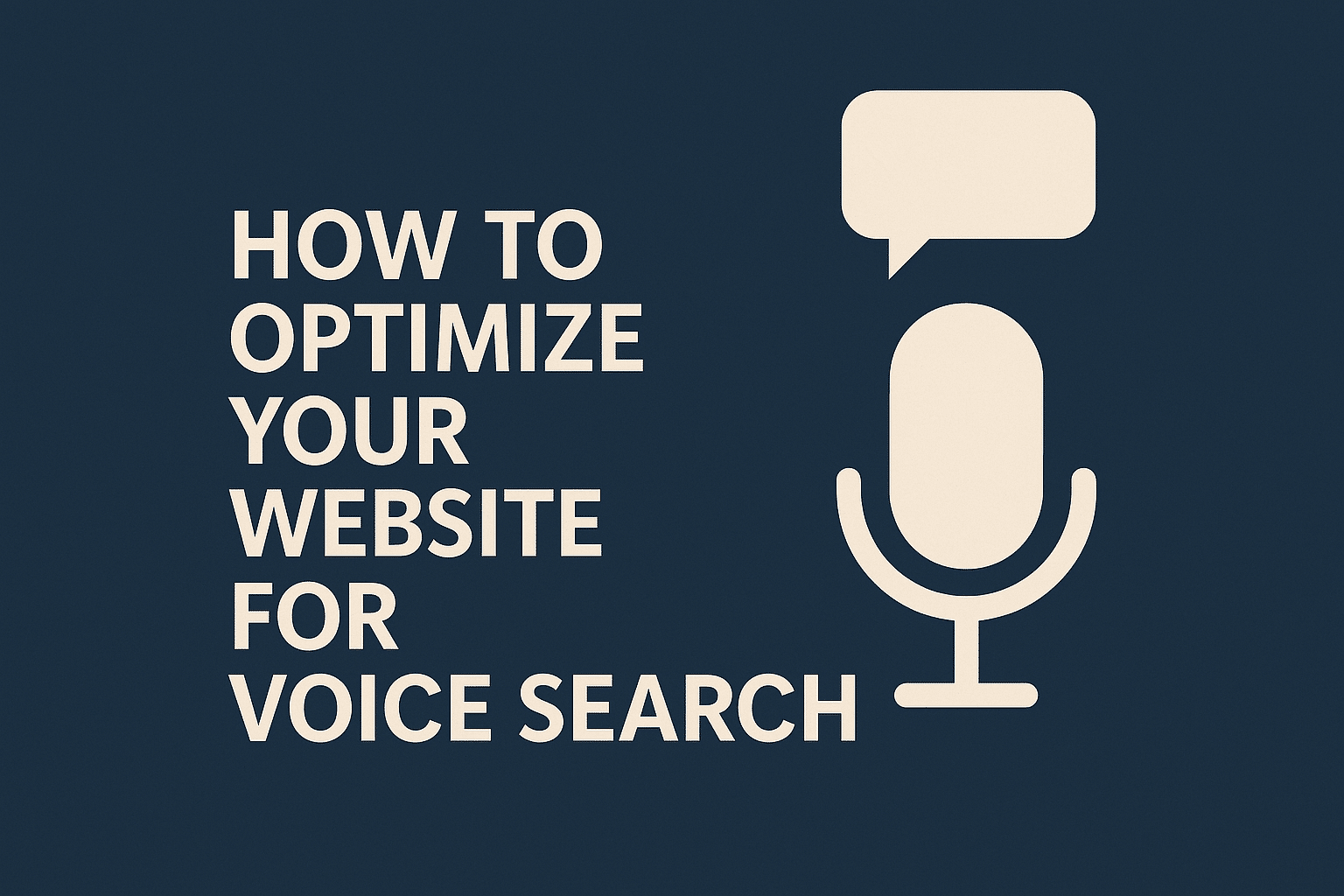Introduction: How to Optimize Your Website for Voice Search
As voice-activated assistants like Google Assistant, Siri, Alexa, and Cortana become part of daily life, voice search is dramatically reshaping how people interact with the web. Learning how to optimize your website for voice search is no longer a futuristic tactic—it’s a present-day necessity.
With the increasing popularity of smart devices and mobile usage, consumers are shifting from typing queries to speaking them aloud. This change requires a new approach to SEO, content structure, and website design. Businesses that want to stay competitive must learn how to optimize your website for voice search to meet the evolving needs of voice-first users.
Why Voice Search Optimization Matters
By 2025, it’s estimated that more than 50% of all searches will be voice-based. Knowing how to optimize your website for voice search can significantly impact your visibility and engagement.
This shift affects everything from keyword strategy to site speed and structured data. Voice search tends to favor websites that provide fast, clear, and direct answers to common questions.
1. Use Conversational, Long-Tail Keywords
The first step in how to optimize your website for voice search is adjusting your keyword strategy.
People speak differently than they type. Voice searches often involve natural language and question phrases like “What is the best coffee shop near me?” or “How do I fix a leaking tap?”
To optimize for this:
- Focus on long-tail keywords that reflect conversational tone.
- Use tools like Google’s autocomplete or Google Trends to identify commonly spoken queries.
- Include question-based headers such as “How to…” or “What is…”
2. Create FAQ Pages and Answer-Focused Content
A critical tactic in how to optimize your website for voice search is developing FAQ sections and answer-rich content.
Structure your FAQ pages with:
- Clear, concise answers under each question.
- Schema markup to help search engines understand the content.
- Easy-to-navigate design and mobile responsiveness.
3. Improve Page Speed and Mobile Performance
Voice search is most often used on mobile devices. If your site loads slowly or isn’t mobile-friendly, users are likely to bounce—and voice assistants will favor faster websites in their results.
To address this:
- Optimize images and compress large files.
- Use responsive web design to ensure compatibility across all devices.
- Leverage website caching and a reliable hosting provider to reduce load times.
4. Leverage Structured Data (Schema Markup)
Structured data helps search engines understand your website’s content and context. Using Schema markup increases the chances that your content will be used in voice responses or featured snippets.
You can add structured data to:
- Business details (name, location, hours)
- Product descriptions
- How-to guides and tutorials
- FAQ sections
5. Optimize for Local Voice Search
Voice search is often tied to local intent. Users tend to ask things like “Where’s the closest mechanic?” or “What’s the best Thai restaurant in London, Ontario?”
Make sure to:
- Claim and optimize your Google Business Profile
- Include location-specific keywords in your content
- Keep NAP (Name, Address, Phone) info consistent across all listings
6. Write in a Natural, Conversational Tone
Since voice queries sound more like everyday speech, your content should reflect that tone. Writing in a way that mimics how people talk makes it easier for search engines to match your site with spoken queries.
This applies to blog posts, product pages, service descriptions, and FAQs.
7. Use Featured Snippets as a Goal
Featured snippets—those boxed answers that appear at the top of Google search results—are often used by voice assistants as spoken responses.
To increase your chances of being featured:
- Provide direct answers early in your content.
- Use bullet points or numbered lists when appropriate.
- Keep paragraph answers between 40–50 words for maximum visibility.
8. Keep Your Website Secure and Accessible
Google rewards secure and accessible websites. Ensuring your site uses HTTPS, has a clean URL structure, and is WCAG-compliant will help improve rankings and overall voice compatibility.
Accessibility features also align with the inclusive nature of voice search, further improving user experience.
Conclusion
Understanding how to optimize your website for voice search is essential in today’s digital marketing landscape. With more users relying on voice assistants to find businesses, solve problems, and make purchases, websites that cater to this trend will gain a significant competitive advantage.
By incorporating conversational keywords, creating answer-rich content, improving mobile performance, and using structured data, businesses can ensure their websites are voice-search ready.
As voice technology continues to evolve, staying ahead of this shift will be critical to maintaining visibility and engagement in a rapidly changing digital world.




